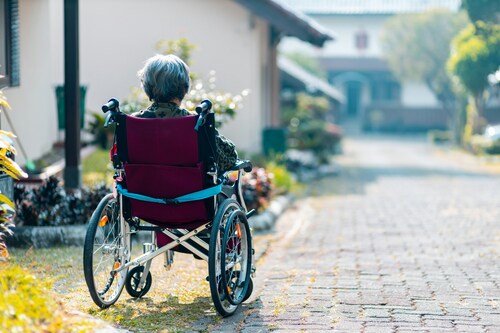What are the latest innovations in assistive devices for those with physical challenges? Recent developments in wheelchair technology are revolutionising personal mobility. These refinements aim to enhance the quality of life for individuals who rely on such devices daily.
Significant progress is being made in wheelchairs and mobility solutions to enhance comfort, independence, and ease of use. These breakthroughs promise a new era of enhanced functionality and user empowerment. This article explores some of the most exciting innovations reshaping the future of mobility.
Smart Wheelchairs: Enhancing Independence
One of the most notable advancements is the introduction of smart wheelchairs. These high-tech devices come equipped with various sensors and software that assist users in navigating their surroundings. Some key features include:
- Obstacle Detection: Sensors detect obstacles and help users avoid collisions.
- Automated Braking: The system automatically applies brakes when necessary, ensuring safety.
- Route Optimisation: Software assists in finding the most efficient path to the destination.
Lightweight and Foldable Designs
Traditional models are often heavy and cumbersome. Innovations in materials and design have directed the development of lightweight and foldable options. These modern aids are constructed from advanced materials such as carbon fibre, providing strength without the added weight.
Electric Power Assistance
Manual propulsion can be physically demanding for many users. The advent of electric power assistance has been a game-changer. This technology provides an additional boost, making it easier to navigate various terrains. It helps users move with less effort and permits users to travel longer distances without fatigue.
Adapting to Various Terrains
Modern designs can handle various surfaces, overcoming traditional models’ limitations. Advanced suspension systems and durable wheels enable users to traverse gravel, sand, or grass. This innovation opens up new possibilities for outdoor activities. Besides, it ensures that users can explore diverse environments without restrictions.
Customisable Comfort
Innovations have focused on customisable options to meet specific needs. Features such as adjustable seat heights, tilting mechanisms, and personalised cushioning provide a tailored experience. These enhancements improve comfort and help prevent health issues related to prolonged use.
Advanced Control Systems
Traditional joysticks are being replaced with more intuitive control options. Modern control systems include touchpads, voice control, and even brain-computer interfaces. These new methods cater to users with varying degrees of dexterity, offering a more inclusive approach to design.:
- Ease of Use: More intuitive controls make navigation simpler.
- Inclusivity: Accommodates users with different levels of hand control.
Long-Lasting Batteries and Efficient Charging
Recent advancements have led to longer-lasting power sources and more efficient charging solutions. Features such as fast-charging options and swappable batteries ensure that users are not limited by short battery life. This development provides greater freedom and peace of mind.
Rehabilitation and Training with AR and VR
Augmented reality (AR) and virtual reality (VR) are beginning to play significant roles in rehabilitation and training. These technologies provide virtual environments where users can practice and improve their skills. AR, in particular, can assist in navigation by overlaying digital information in the real world, helping users find their way in unfamiliar places.
Connectivity and Remote Assistance
Modern designs are embracing connectivity, allowing users to stay connected with caregivers and medical professionals. Internet-enabled models facilitate real-time health monitoring and remote adjustments, ensuring timely assistance and care.
The ongoing developments in wheelchairs and mobility solutions are set to revolutionise personal mobility. These innovations enhance independence and comfort and contribute to a more inclusive society. As technology advances continue, we can expect even more groundbreaking changes to further empower individuals relying on these essential devices.



